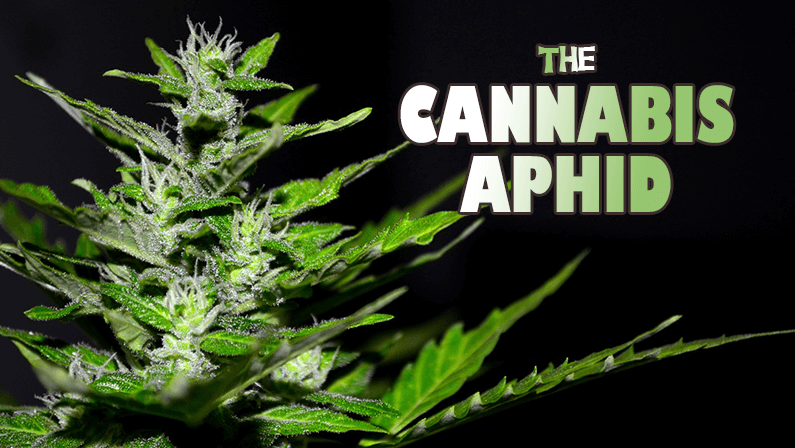WTF right? Have you ever heard of a Cannabis Aphid before? Probably not, unless you’re working in a grow house trying to get rid of this pesky new infestation. As of right now, the aphids have only been found in Colorado and Oregon, but could easily be undetected in other states. Because of the havoc these lil’ a%$holes wreak on the poor plants, it is in everyone’s best interest to learn more about these insects and do their due diligence in helping to control them from spreading.
What is a Cannabis Aphid?
Very similar to their cousins, the Hop Aphid who feeds on the hops your delicious beer is made out of, the Cannabis Aphid has taken the marijuana industry by storm. Also known as a bhang aphid or hemp aphid (Phorodon cannabis), they’re usually found on the leaves and stems of plants and can range in color from light green, pale pink, & light brown. So not only do these creepers come in a variety of colors, they are come both winged and unwinged versions. O_O
How do you detect a Cannabis Aphid infestation and what kind of damage do they cause?
The aphids feed by sucking the fluids right out of the plants using “piercing-sucking” mouth parts. When there are a high number of aphids for a period of time, the loss of fluid can start to damage the plants. If you start to notice slowed growth, leaf yellowing, and wilting; it’s probably a good idea to closely inspect some of your plants.
Similar to other aphids, these critters must shed their exoskeleton as they grow. Over time, these “cast skins” will gather on the leaves below. As the aphids feed, they excrete a sticky fluid known as “honeydew”. This sticky fluid will drop and gather on the leaves below with the skins and show up as little shiny spots. Two great indicators you’ve got yourself a bug problem.
As with most pests, the Cannabis Aphid is a potential host for viruses and other plant pathogens. So… not only will this lil’ nugget of hate cause significant plant damage when it sucks the liquids out of your plants, but it will introduce other things that will be more than happy to kill off your plants too.
How do plants become exposed to the Cannabis Aphid?
Since these particular aphids cannot survive in the cold, they are usually found in areas where crops are grown year round indoors or in late summer crops outdoors. Indoor facilities can become infected by the winged varieties of the aphids flying in from near by infested outdoor crops but most indoor crops become susceptible by the introduction of already infested plants or cuttings.
How do you get rid of the Cannabis Aphid?
It’s important to inspect your plants daily for any kind of pest infestation. Getting a head of the game and controlling the issue before you have one will save you time and money later on. Trust us. An easy way to see whether or not insects or spreading around your crop is to hang some of those yellow sticky tapes. If you see an influx of bugs on your tape, you’re probably not gonna have a good time.
Infestation getting out of control? It might be time to introduce some natural enemies of the Cannabis Aphid if your crops are all indoors. Green lacewings, aphid predator midges, and lady beetles are all good options. If you’re feeling revengeful, there are also some wasps who will attack the aphids. We all know wasps don’t mess around. THEY’RE PURE EVIL. A few that are available for commercial use; Aphidius colemani, Aphidius ervi, and Aphidius matricariae. Get ’em.
There are some insecticides allowed for use on cannabis that will help control aphid populations. Active ingredients in these products include; pyrethrins, azadirachtin, and insecticidal soaps (potassium salts of fatty acids). Last but not least, you can also utilize the fungus Beauveria bassiana. This particular fungus will produce disease in the aphids and kill them off. One downside to using this option is humidity levels need to be incredibly high for it to be effective.
Now that you’ve got a handle on your aphid problem, the next step is prevention. Really, the only likely means of re-infestation is through the introduction of plant material containing live aphids. Make sure to follow strict sanitation guidelines before introducing any kind of new plant material to your crops. One easy way to do this is to keep all new plants in a quarantine area away from the main crop for several weeks. Inspect them daily for any signs of insect activity. Any honeydew, cast skins, insects on sticky traps?
Let’s all do our best to prevent this pot eating demon from spreading anywhere else.
Have questions? Comments? More information about the Cannabis Aphid you think we should share? Contact us or comment below!
Resources:
Oregon Department of Agriculture
Colorado State University
Colorado State University – Additional Information

